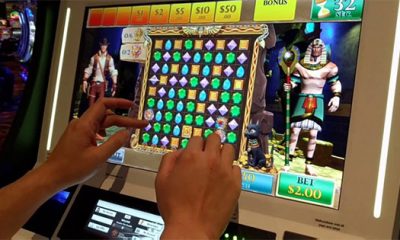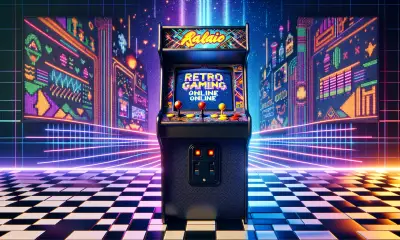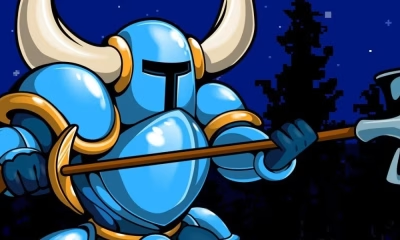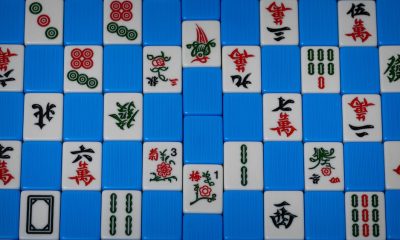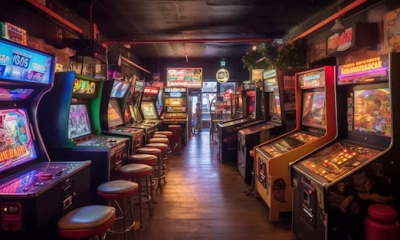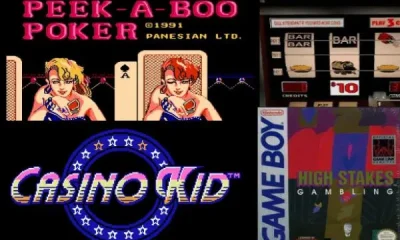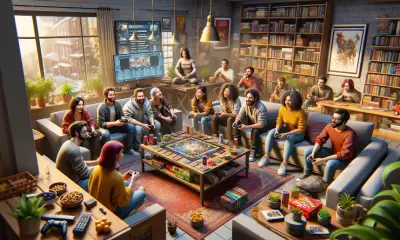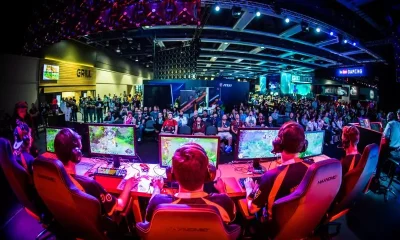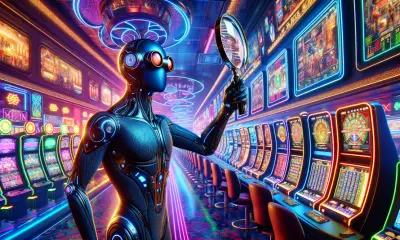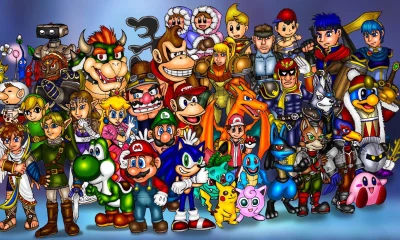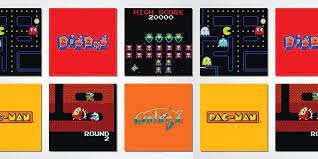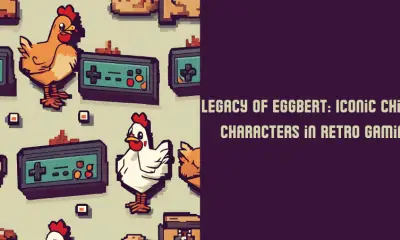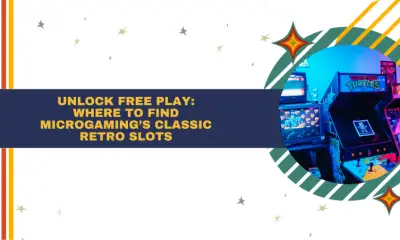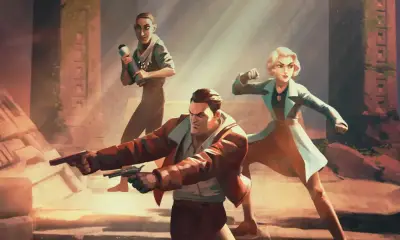The influence of retro video games runs deep in current game styles. This text illustrates how straightforward retro visuals and complex old narratives formed new titles.
From modest projects to blockbusters, you’ll grasp how game design’s bygone threads intertwine with today’s tech advancements, minus excessive detail better learned through gameplay.
A Blast from the Past in Online Slot Games
The online slot games industry is embracing the retro aesthetic. Developers artfully merge classic arcade graphics and sounds with modern interfaces, creating a nostalgic yet fresh gaming experience.
The blending of old and new attracts retro enthusiasts and younger players, appreciating simplicity’s charm.
Additionally, these slots often feature traditional mechanics like three reels and minimal paylines. This contrasts starkly with many complex contemporary games. By keeping things straightforward, they offer engaging gameplay focused solely on enjoyment.
No overwhelming features distract from the core fun. The strategic retro elements highlight early gaming’s lasting impact. Even the most modern platforms draw from this design philosophy.
Retro Origins Woven into Cutting-Edge Creation
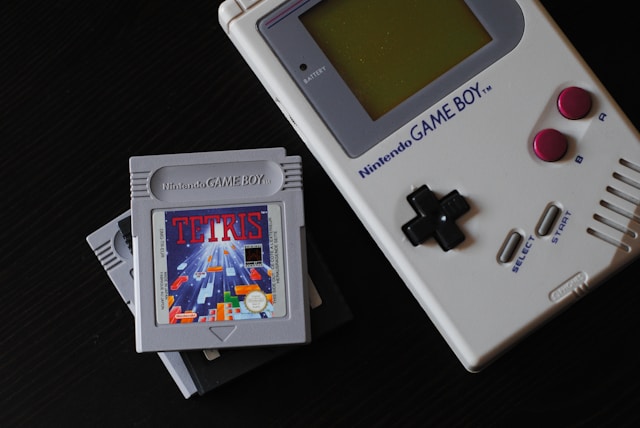
An interesting modern game development pattern celebrates the past. Nostalgic pixel art visuals and classic chiptune soundtracks seamlessly incorporate robust mechanics, bridging two worlds.
Resurgent retro games tap simplicity, reliability, and potent nostalgia proven captivating for the industry.
This retro gaming renaissance spans ages, shaping entertainment landscapes and capturing fans appreciating classic and contemporary experiences. Core retro principles elegantly weave into modern video game design, linking past and present gameplay. This unique nostalgia-novelty blend keeps gamers hooked.
Pixel Art Renaissance
Pixel art is a visual style from old video games. But it’s getting popular again in modern gaming. Developers make extraordinary worlds by mixing simple art and creativity. An outdated art form is being reused and celebrated.
Pixel art is charming because of how it looks and feels. It connects gamers who grew up with it and new players who like retro things. The emotional bond makes gaming feel like old-school games.
Classic Gameplay Mechanics Reimagined
To engage today’s gamers, new games rethink old gameplay. Combining old and new attracts all age groups.
Many games draw from the simple, engaging gameplay of retro titles. Like card games. The focused gameplay and artistic expression appeal to generations. It inspires players to design video games.
To modernize the classics, developers often:
- Use advanced engines like Unreal to rebuild games from nothing
- Revamp combat to match current desires
- Keep games are apt and gripping for today’s players
Storytelling: From Text Boxes to Cinematic Narratives
Video game storytelling evolved immensely over time. However, retro game narratives clearly influenced modern techniques, such as:
- Basic text boxes
- Cutscenes
- Dialogue trees
- Interactive narration
- Non-linear stories
The storytelling progression attests to retro games’ lasting impact.
Retro stories excelled at universal themes: heroism, friendship, good vs. evil. These timeless ideas deeply resonated, forging emotional player bonds. These nostalgic themes shape complex modern plots, engaging players profoundly.
The Revival of 2D Gaming
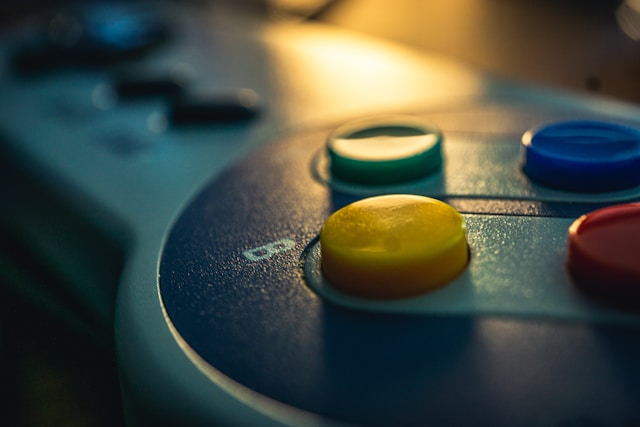
2D games’ accessible nature drives their continued popularity. This approachability broadens the appeal to diverse audiences: newcomers to veterans.
2D games are easy to create. They appeals to game makers of all skills because 2D art is simple to draw. Even newbie game-makers can start projects and release fun 2D titles. 2D visuals aren’t demanding, which opens up opportunities for entry-level designers.
Modern gamers love retro 2D artwork and style. The nostalgia hooks old fans, but the easy gameplay also attracts new ones.
Games today use pixelated graphics for nostalgia because players truly enjoy the timeless charm of 2D visuals. Despite flashy 3D games, many gamers crave classic and straightforward 2D adventures!
Indie Developers: Torchbearers of Tradition
Independent game designers led the 2D gaming comeback. Small studios make 2D games that are high-quality and imaginative.
These developers utilize pixels and 2D visuals masterfully, meshing classic gameplay with fresh ideas. Indie 2D games stand apart from typical AAA titles by merging vintage game charm with modernized designs.
Accessibility and Charm
2D games make designing accessible while encouraging creativity. Without ready-made art, developers must handcraft each sprite and background.
This craftsmanship gives 2D games a distinctive, charming quality that many gamers desire. 2D gaming opens doors for first-time designers while upholding nostalgic traditions with handmade pixel artwork.
Creating attractive visuals is essential, but indie developers also focus on having a strong visual identity for their games. They ensure that the visual style and theme are consistent.
This is possible because of the modular asset design, which lets developers build varied in-game elements efficiently while maintaining consistency across their games.
Using modern tools and technologies like HTML5, developers can create accessible 2D games with compelling visuals, which attracts players and encourages them to play the games frequently.
The Challenge Factor: Difficulty in Modern Games
The challenge of game design has its roots in the era of retro gaming, which continues to influence modern video games.
Contemporary titles use classic challenging gameplay elements, creating engaging experiences like the challenges of yesteryear. This entices gamers to keep playing.
For many avid players today, diving into retro games is an exhilarating test of skill. They, enjoy conquering the formidable difficulty levels and mastering old-school mechanics. These challenges remain a highlight in a current sea of games, often emphasizing ease-of-play over true grit.
Strategy-based video games, role-playing adventures, and intricate board games especially embody this ethos. They showcases sophisticated designs with complex systems at their core.
These demanding characteristics require dedication and prowess for mastery. This results in heightened feelings of triumph and fulfillment, keeping dedicated players immersed in the realm of strategic gameplay.
Finding the Sweet Spot: Accessibility vs. Challenge
The difficulty is part of gaming but should cater to everyone. Dynamic difficulty adjusts enemy actions and power-ups based on the player’s skills. This balance is key.
Designers want newcomers to pick up games easily, yet veterans seek depth. To achieve this harmony, they apply techniques welcoming to players with disabilities, widening gaming’s appeal. Plus, customizing difficulty allows for personal, rewarding experiences.
Old Legends Made New: Reviving Cherished Game Franchises
Gaming often revitalizes classic franchises, capitalizing on nostalgic fan bases by refreshing beloved characters and worlds. Remastered versions modernize graphics and mechanics while preserving the original core.
Embracing nostalgia, they offers a contemporary experience imbued with gaming’s timeless spirit, fusing past and progression.
The Business of Nostalgia
Games from yesterday’s era are getting popular once more. This trend isn’t just a fond look back. It’s also a profitable business path. Games updated with modern visuals and gameplay have done very well in sales. This shows older games still appeal significantly to their original fans and brand new players.
More and more people today are buying and playing retro games. A key factor is that the original players from decades ago now have money to spare. They’re happy to purchase revamped versions of games from their youth.
Not only are these reboots commercially successful, but they’ve also attracted many first-time players. As a result, beloved classic game series gain even more popularity now than before among gaming audiences new and old, ensuring their lasting legacy.
Blending Past With Present
Breathing new life into iconic game franchises isn’t easy. Developers such as Nintendo and others looking to renew games must carefully balance: keeping the timeless qualities fans loved while upgrading graphics and gameplay to meet today’s standards.
They must deeply understand what made the originals so special in the first place. Only then can they refresh these classics in ways that enchant longtime fans and newcomers alike while staying faithful to the vintage spirit.
It’s a tricky tightrope act, demanding creativity, deep knowledge of what clicked before, and ensuring the revamped versions capture that magic anew for modern players – honoring the past while bringing it into the present day.
- Innovation
- Knowing the originals’ appeal
- Re-enchanting fans old and new

- What Makes Real Money Online Casinos Appealing to Players?
- From Arcade Cabinets to Browser Tabs: How Retro Gaming Went Digital
- From Arcades to Apps: Decades of Gaming Culture
- On-Chain Game Design: What Web3 Actually Adds to Core Gameplay
- The Revival of Retro Games – The Best Setup for the Real Feel
- How Developers Make Money from Free-To-Play Games
- How Retro Level Design Explains Modern Jackpot Lobby Themes and Player Navigation
- What Features Players Look for the Most in Retro Online Casino Games
- The Journey of Arcade Games into Blockchain Slots
- When Classic Design Meets Modern Tech: How Old-School Games Inspire Today’s Live Platforms
- Retro Slot Games: Still a Good Bet?
- The State of Casino Gaming on the Nintendo Switch in 2025
- 5G and Retro Multiplayer: Revamping Classic NES Games for Online Mobile Battles
- Low-Power Tech for Mobile Gaming
- From Retro Casino Games to the Online Experience
- Retro casino games: a complete guide
- How Different Industries Are Using Techniques From Gaming to Attract and Retain Customers
- The Enduring Appeal of Retro-Style Games
- Level Up Your Gaming: How to Maximize Bonuses for Retro and Online Casino Fans (2025 Guide)
- Megaways vs. Retro Slots: Which Are Better?
- Treasure In Your Attic? The Most Sought-After Retro Games
- Reliving the Golden Era of Gaming with PlayRetroGames.com
- Remembering some of the worst retro games ever made
- Top Picks: The Best Retro Games to Play Online
- Rediscover the Magic: Retro Games Unleashed!
- From 8-Bit to High Stakes: The Retro Gaming Roots of CS:GO Case Battles
- The Best Retro Themed NFL Video Games
- 12 of the Most Influential Chinese-Themed Retro Games
- The Role of Sound and Graphics in Online Casino Games
- The Enduring Appeal of Classic Table Games in Online Gaming
- Why Super Puzzle Fighter Was a Precursor to the Age of Casual iGaming
- Top Online Casino Providers: A New Era in Gambling
- The Evolution of Fast Payouts in Gaming: From Retro Classics to Modern Platforms
- A nostalgic revolution among retro gamers: Migrating to the thrills of online casinos
- The Increasing Role of Apps in Online Gaming
- How Retro Games Are Evolving to Match A More Mobile Gaming Industry
- Retro Game Elements in Today’s Online Casino World
- Hidden Levels and Easter Eggs in Retro Games
- The History Of Gambling In Asia
- Retro Video Game Mechanics in Casino Games
- Most Popular AK-47 Skins in CS2 and Their Prices
- The Psychology Behind Online Gambling: Why We Keep Coming Back
- Casual vs. Risky Plays: Balancing Fun with Crash Games and Retro Slots
- From 80s Arcades to Online Casinos: How Retro Video Games Inspired Modern Casino Games
- Why Poker Has Stood the Test of Time
- Tower.bet Loyalty Program: How to Earn Extra Bonuses
- What is the appeal of playing retro games?
- How Live Streaming is Revolutionizing Sports Betting
- Classic Retro Casino Slots
- Esports Tournament to Look and Bet On
















